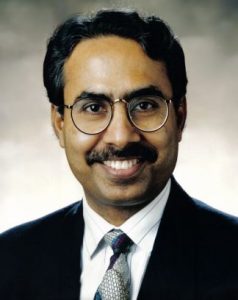
Bijay Singh
ASPB Legacy Society Founding Member
How did you spend your career?
I received my early education, including my MS, in India. I moved to Australia in 1978 and joined the University of Adelaide. After completing my PhD in 1982, I started postdoctoral work with Jack Preiss in the Department of Biochemistry and Biophysics at the University of California, Davis. Soon after I joined his lab, Jack moved to Michigan State University, so I joined Eric Conn in Jack’s department and started working on aromatic amino acid biosynthesis. My experience in the area of amino acid biosynthesis not only helped me get a job in industry but also led me to spend the rest of my career in one or another aspect of amino acid metabolism in plants. I joined the American Cyanamid Company in Princeton, New Jersey, in 1986. Over time, I advanced in the company, and I was fortunate to be on both the scientific and the management ladder. In 2000, our company was acquired by BASF, and I moved with the new company to Research Triangle Park in North Carolina. At BASF, I held different management positions, leading to administrative responsibility for the whole research team. I retired from BASF in December 2016. During my 30 years in the industry, I stayed in research except for the last few years, when I had primarily administrative responsibilities. Working in industry gave me an opportunity to work with colleagues on different stages of project development, including sales and marketing of our products. Over these years, I was able to explore a wide array of research topics, but most of my time was spent in the area of amino acid biosynthesis, herbicide discovery, and herbicide-tolerant crops.
What do you consider to be your most important contributions to plant science?
Throughout my career, I had the opportunity to work with a number of extraordinarily talented people. Through our efforts, we had many successes, of which three projects continue to have a significant impact on agriculture globally: the family of imidazolinone herbicides, saflufenacil herbicide (a protoporphyrinogen oxidase inhibitor, marketed under the Kixor trademark), and Clearfield crops (crops resistant to imidazolinone herbicides). We developed more than 15 different commercial products that continue to be a part of global food production.
When did you become a member of ASPP/ASPB?
I became a member of ASPP in 1983, when I attended the annual meeting in Fort Collins, Colorado. From that year onward, I attended the annual meeting regularly until my retirement.
How did the Society impact your career, and what motivated you to become a Founding Member of the Legacy Society?
In 1985, during the opening day mixer of the ASPP annual meeting in Providence, Rhode Island, I was introduced to Mark Stidham from American Cyanamid Company, which kick-started my career in industry. The annual meetings were a great opportunity to present my work and to learn about the work of others, to meet colleagues and competitors from academia and industry, to set up collaborations, and to recruit employees for our organization. ASPB produces worldclass journals in which we were able to publish our work. ASPB also provided me the opportunity to serve on several committees, which was a small way to give back to the Society. Because ASPB had a huge impact on my career, I wanted to do more for the Society, which led me to work with other colleagues in setting up the Eric E. Conn Young Investigator Award (first awarded in 2011) and the Innovation Prize for Agricultural Technology (first awarded in 2015). In the spirit of giving back to ASPB, I jumped at the opportunity to become a member of the Legacy Society.
What important advice would you give to individuals at the start of their career in plant science?
Individuals start their career primarily through their personal efforts, including hard work, creativity, persistence, and so on. However, from that point onward, success not only is a product of one’s personal efforts, but also depends more on the success of one’s team (e.g., students, postdocs, colleagues) and collaborators (both internal and external). I have three recommendations that will be helpful in this regard. First, you should have a vision and purpose, and you are the biggest believer and the strongest advocate of your vision. Second, you need excellent communication skills (oral and/or written, ideally both) that will help you communicate your vision and get buy-in from colleagues, collaborators, superiors, granting agencies, and so forth. Third, strong interpersonal skills will help you keep your colleagues and collaborators motivated to achieve their goals, which in turn will be a cornerstone of your personal success.
ASPB members share a common goal of promoting the growth, development, and outreach of plant biology as a pure and applied science. This series features some of the dedicated and innovative members of ASPB who believe that membership in our Society is crucial to the future of plant biology. If you are interested in contributing to this feature, please contact ASPB Membership at info@aspb.org
